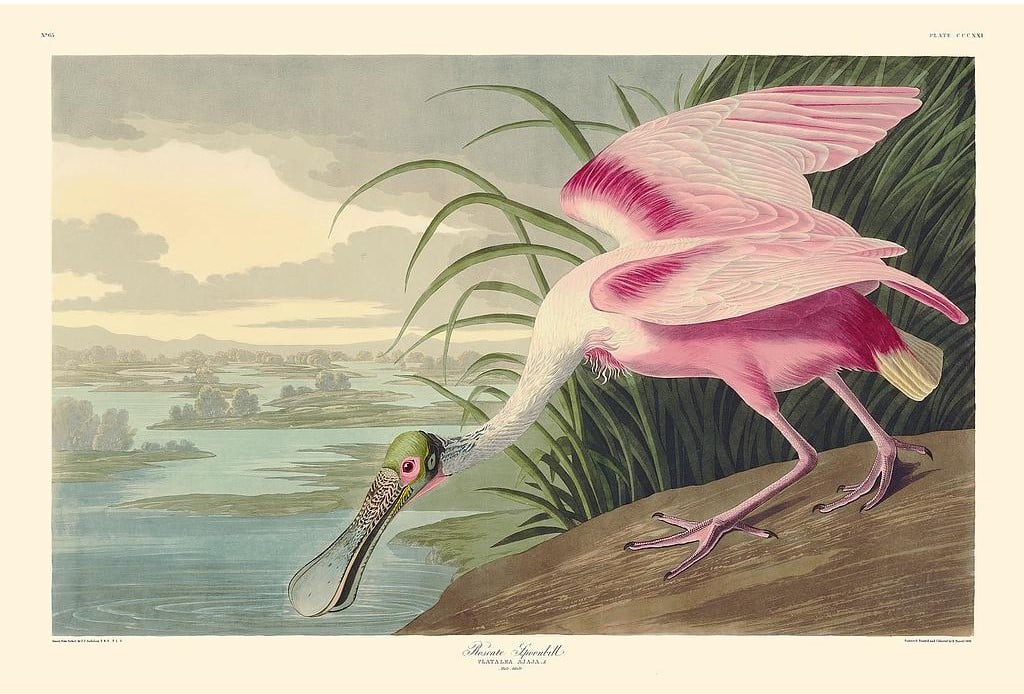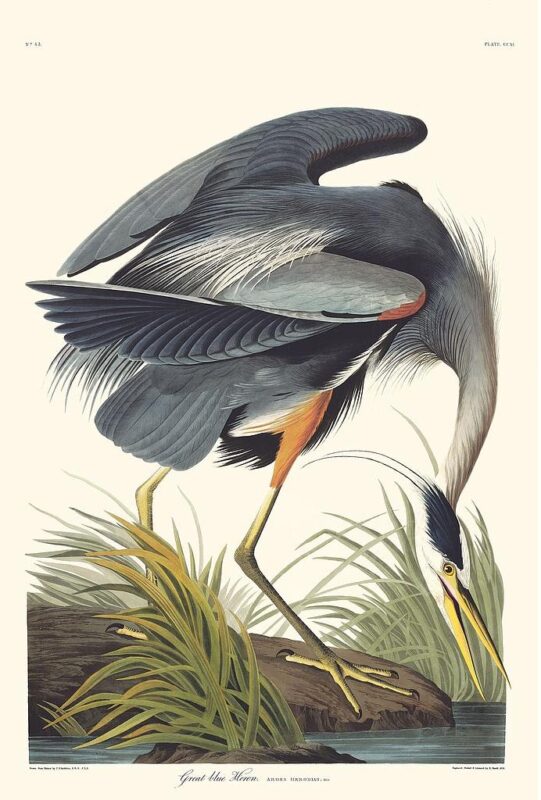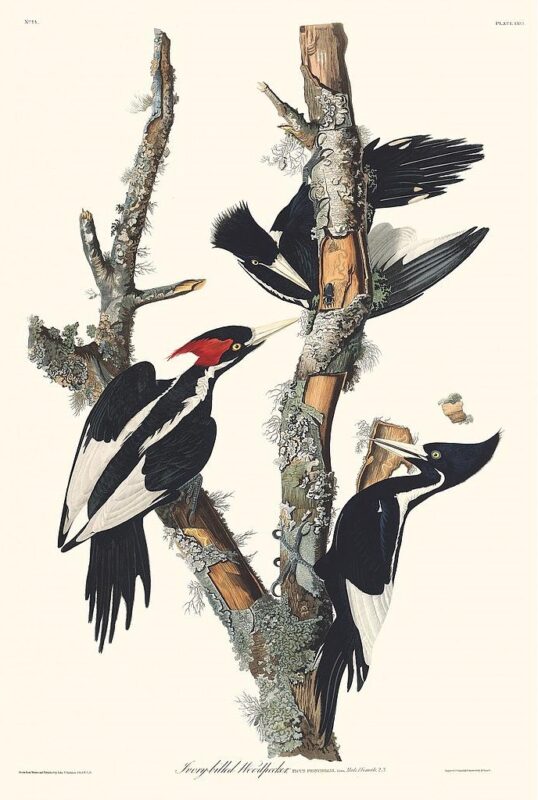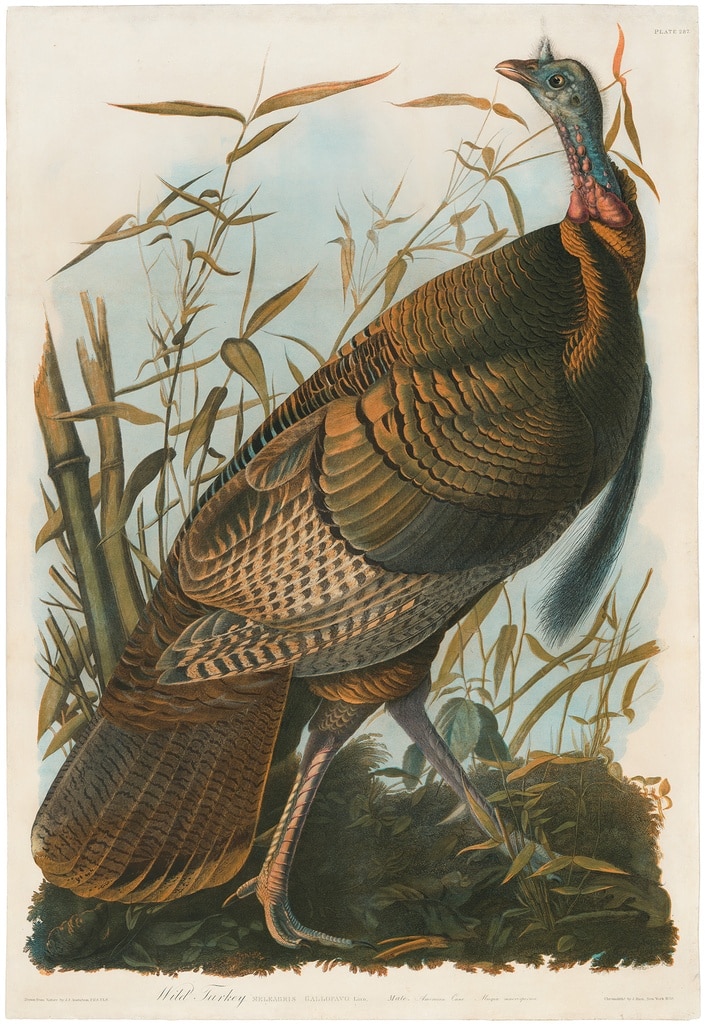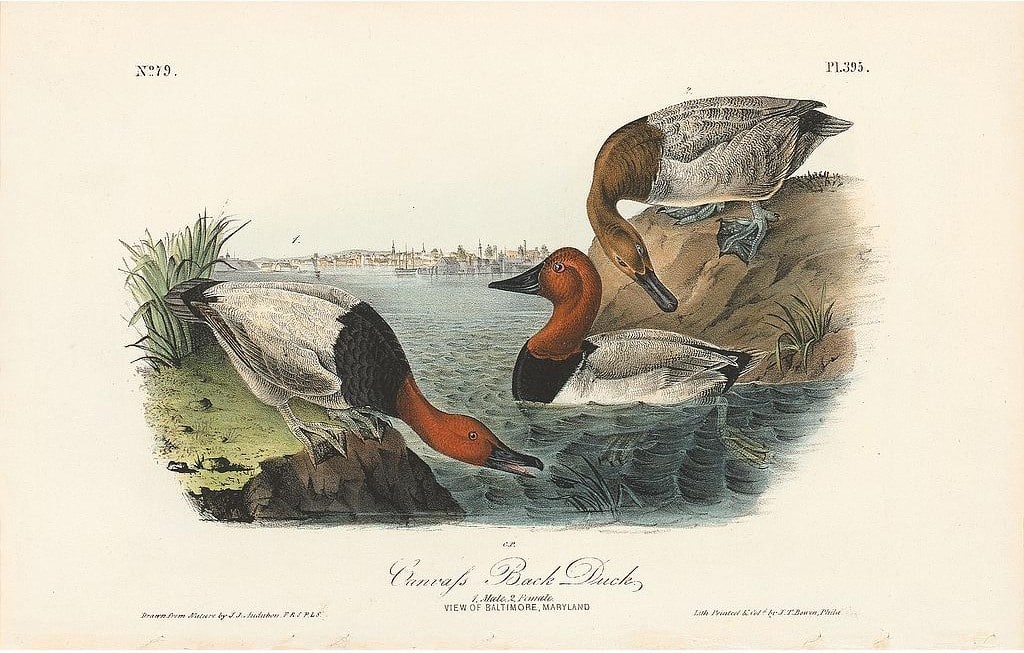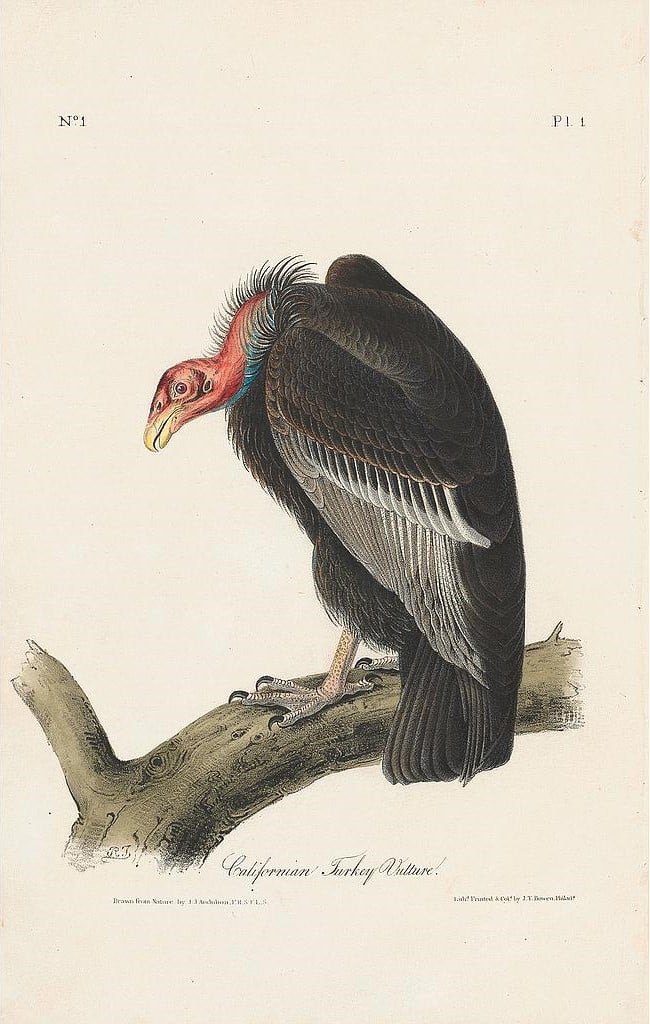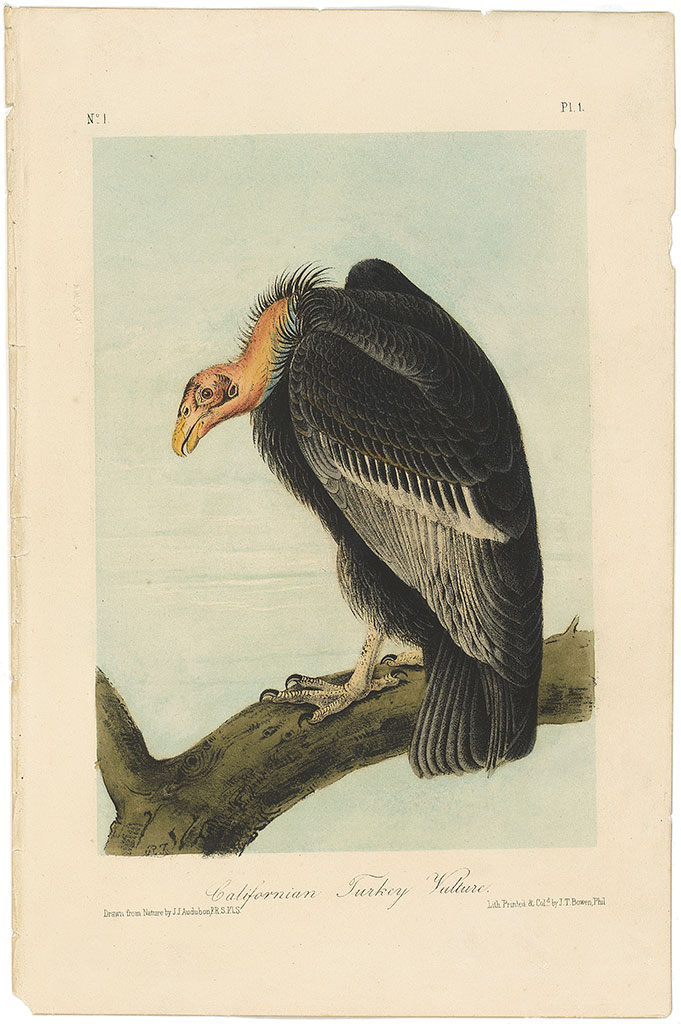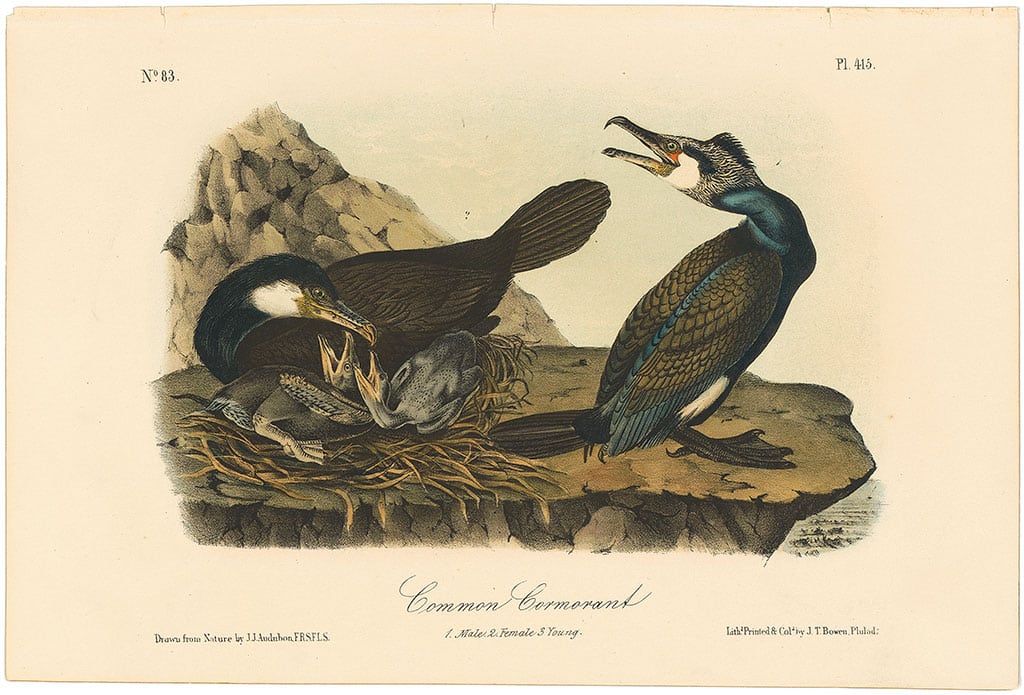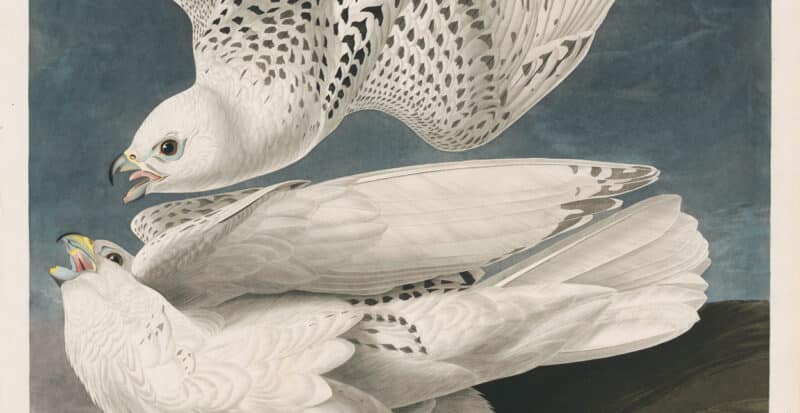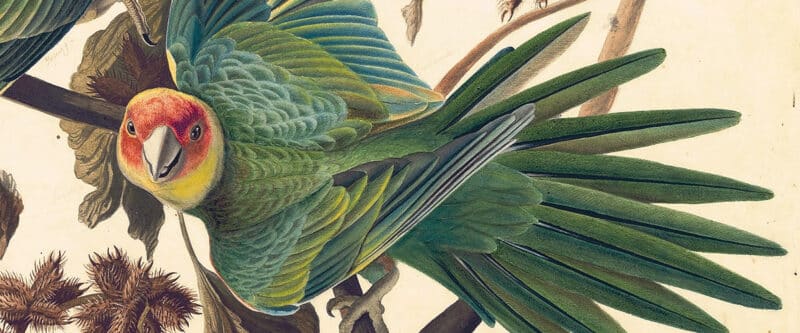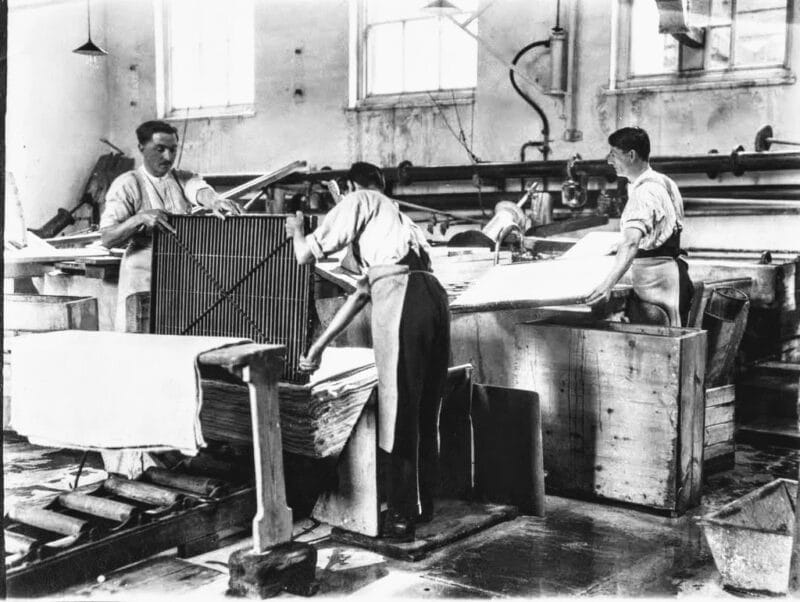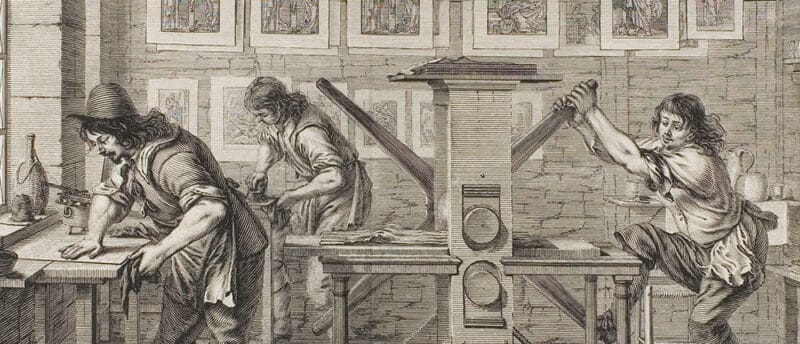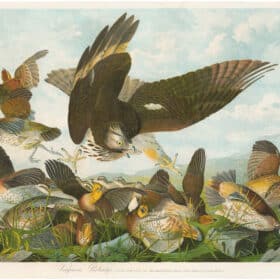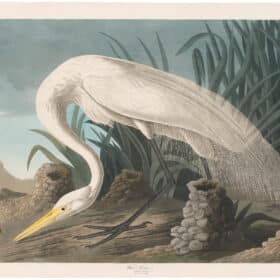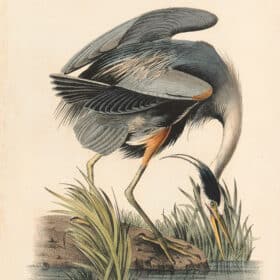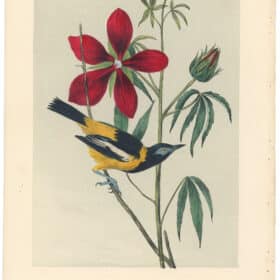Audubon Prints, Information
Audubon Collecting Guide
An Overview of the Antique Original Editions of Audubon’s Birds of America
With sale records surpassing $11 million for a complete Havell edition set of Audubon’s Birds of America, the Audubon market may appear to be a prohibitively expensive landscape. However, aspiring collectors will be delighted to know that an antique original Audubon print can be obtained for as little as $50. This comparative analysis will survey the various editions of Audubon’s Birds of America in relation to one another.
Table of COntents
The Havell Edition (1826-38)
Comprising 435 prints and capturing 489 different species of American birds, Audubon’s Havell edition of The Birds of America was a monumental undertaking and the most comprehensive representation of North American birds at the time. Engraved exclusively on double-elephant folio-sized paper, the prints are notable for their grand proportions of approximately 26 1/2″ x 39 1/2″. The printing of the folio began with W.H. Lizars of Scotland in 1826, but the assignment was swiftly taken over by Robert Havell Jr. of London who completed the project in 1838. Havell’s workshop translated Audubon’s watercolor paintings into aquatint engravings that were then hand colored with watercolor and gouache. The paper used for the folio was sourced from two competing paper firms: J Whatman and J Whatman Turkey Mill. As a result, all original untrimmed Havell edition prints from Audubon’s Birds of America contain a watermark bearing reference to one of the two paper manufacturers.
Audubon Havell Edition Pl. 321, Roseate Spoonbill
Buy nowAudubon originally produced approximately 200 sets of the complete folio, around half of which are currently still bound and in various public institutions and private collections. The remaining sets have since been broken up and the prints sold separately. Additionally, there are a number of prints that were never part of a complete set that remain in circulation. Individual prints in excellent condition range from around $ 4,000 – $ 250,000. Generally speaking, larger birds and prints will full compositions tend to lean toward the higher end of this scale, while smaller birds and less detailed compositions oscillate around the mid to lower end of the scale. Certain species including all manner of herons, select birds of prey, and stunners like the roseate spoonbill tend to be highly sought after and thus command higher prices. Likewise, dynamic and engaging compositions such as the Virginia Partridge, Carolina Parrot, and Ivory-Billed Woodpecker prove irresistible to collectors.
The bien edition (1858-60)
The second full-size edition of Birds of America was posthumously published by Audubon’s sons, John Woodhouse and Viktor Gifford. Like the first edition, the Bien edition was printed on double-elephant folio-size sheets of paper. Unlike the first edition, the paper used in the Bien edition does not bear a watermark. Additionally, only 150 plates of the original 435 were ever completed since production was halted by the onset of the American Civil War.
Printed in New York by Julius Bien, this edition was rendered through the newly refined technology of chromolithography. While the Havell edition prints tend to command higher prices, the Bien edition is rarer with fewer than seventy folios having ever been completed. Individual untrimmed prints in excellent condition range from approximately $ 2,500 – $ 48,000.
the first royal octavo edition (1839-44)
Production of the First Royal Octavo edition of Birds began immediately after the Havell edition was complete and before the initiation of the Bien edition. This edition is notable for its economy of scale and price point with each print rendered on octavo-sized paper measuring approximately 6 ½” x 10 ¼” and priced anywhere from $ 50 – $ 2,950. The purpose of this octavo edition was to make Audubon’s monumental folio accessible to a broader demographic by reducing its size and associated cost. As a result, the smaller, less costly, and more portable edition was a great success and resulted in the sale of well over 1000 copies internationally.
The 1st Royal Octavo edition was printed primarily by J.T. Bowen in Philadelphia with the exception of plates # 136 – 150 which were contracted out to Endicott in New York. The plates were printed using lithography and then colored by hand using watercolor and gouache. Subsequent Royal Octavo Editions have elements of chromolithography (printed color), allowing them to be easily differentiated from the 1st Edition. Containing 500 prints, the octavo edition simplified several of Audubon’s Havell edition prints that contained multiple species by separating them onto different plates. Additionally, as the discovery of America’s western frontier developed, nineteen new bird species were added to the octavo edition.
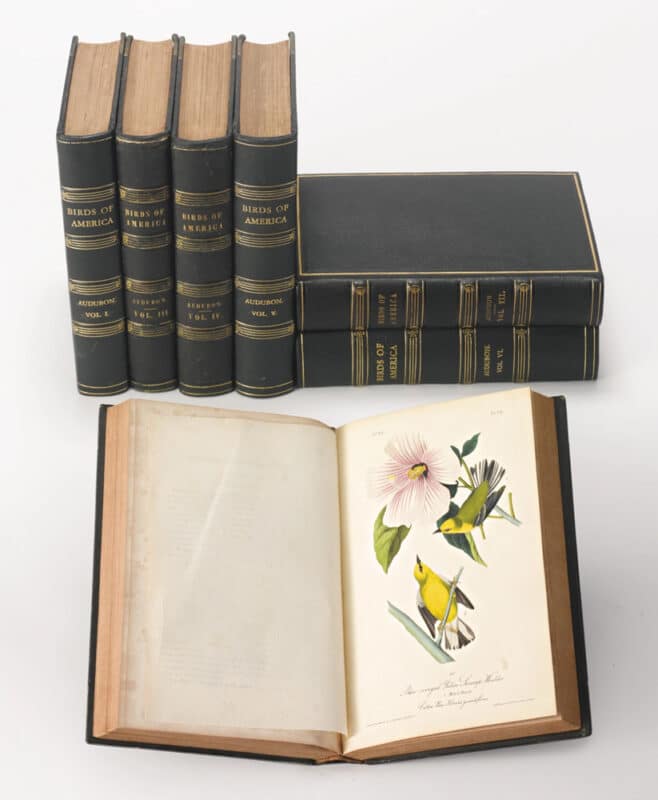
With the help of his two sons and a device called the camera lucida, Audubon’s birds were translated from life-sized to miniature scale. The prints were also reordered in phylogenetic order so that related species were grouped together, owls were near owls, and so on. This resulted in the renumbering of the plates so that Plate 1 of the octavo edition, the Californian Turkey Vulture, is not the same plate as Plate 1 of the Havell edition, which features the Wild Turkey. Interestingly, the Bien edition espoused the taxonomic order and numerical system of the octavo edition.
subsequent royal octavo editions (1856-71)
As mentioned, a primary distinguishing feature between Audubon’s 1st Royal Octavo Edition and subsequent editions, of which there are seven, is the presence of printed color in addition to the hand-colored elements. While the 1st edition prints were rendered using a single stone in the printing process that delineated the black contour of the bird, environment, and plate legend, the subsequent editions employed a second-stone tint.
Audubon 1st Ed. Octavo Pl. 1 Californian Turkey Vulture
buy nowAudubon 2nd Ed. Octavo Pl. 1 Californian Turkey Vulture
buy nowIn the 2nd-7th octavo editions, two lithography stones were used; one to delineate the imagery and a second to create a monochromatic tint that acts as a halo of atmospheric color around the scene. It is important to note that some first-edition octavos, including the Jer Falcon, Barn Owl, and Snowy Owl, have hand-colored hazy backgrounds that could cause them to be mistaken for later edition prints.
There are very few general characteristics that distinguish the 2nd and subsequent editions of Audubon’s octavos, and quality control and uniformity decreased as time passed. While different publishing companies took over the issue of the latter editions, the prints still bore reference to J.T. Bowen Philad. or Bowen & Company in the printer’s credit. Furthermore, leftover prints from the issue of one edition were often used for the next, which adds to the difficulty in distinguishing these subsequent editions. Likewise, the value of 2nd and later edition prints tends to be proximal to or slightly lower than 1st edition prints.
Final Remarks
Audubon’s three editions of the Birds of America allow prospective collectors to enter the market at various price points. Likewise, his Havell, Bien, and Octavo editions all uniquely illustrate progressions in printing technology from engraving to lithography and chromolithography, which each medium lending a different perspective to the classic imagery.


